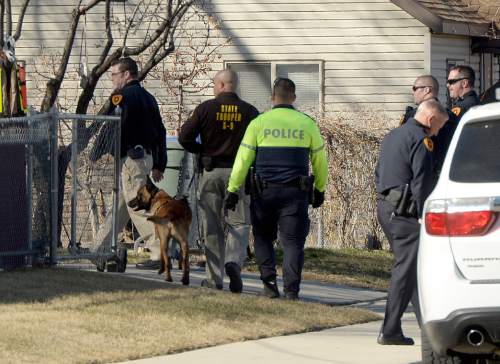This is an archived article that was published on sltrib.com in 2015, and information in the article may be outdated. It is provided only for personal research purposes and may not be reprinted.
More squad cars and more laptops — not more cops.
The Salt Lake City Police Department called a news conference Tuesday to undercut statistics produced by the police officers union that show crime in the capital city is up.
Union president Michael Millard is asking the City Council to add 25 to 30 officers to keep up with the increase in crime.
According to statistics presented by Millard, serious Part I crimes — which include murder, rape, robbery and auto theft — have gone up every year since 2011.
But Deputy Chief Tim Doubt, who oversees logistics and technology, said that Millard is presenting statistics that don't reflect the general trend of falling crime in Salt Lake City.
Doubt said the police department uses statistics generated by the National Incident Based Reporting System (NIBRS) that is more sophisticated than the Uniform Crime Reporting statistics cited by the union.
According to NIBRS statistics, Part I offenses are down 20.8 percent from 1995 to 2014. Less serious Part II offenses are down 8.5 percent from 2008 to 2014, Doubt said.
"We are more fully staffed that we ever have been," he said comparing officers on the street to the crime rate. "We feel like we're in a good position to take the call load we're getting."
Meanwhile the police department's fleet and laptop computers are aging. In order to do its job efficiently, the department needs updated equipment, rather than more officers, Doubt said.
But Council members from the city's east side aren't so sure. Erin Mendenhall, Lisa Adams and Charlie Luke all have called for more officers on the street. All three say they have heard from their constituents that police response times are slow and they'd like to see more police presence in their neighborhoods.
And the union's Millard said that officers often are responding alone, when two officers would be safer and more effective.
The operational flexibility model used by the police department allows officers to go where they are needed. In the past few years, criminal activity has been concentrated downtown and the Rio Grande district around Pioneer Park. That has led to fewer officers on the east side.
The council must adopt a budget by the third week in June. Mayor Ralph Becker's proposed $254 million budget includes $60.4 million for the police department. It outlines 12 new positions for the department. But five of them are current officers who have been funded through a federal grant that is coming to an end. The other seven are civilian personnel who would free up sworn officers from clerical duties.



